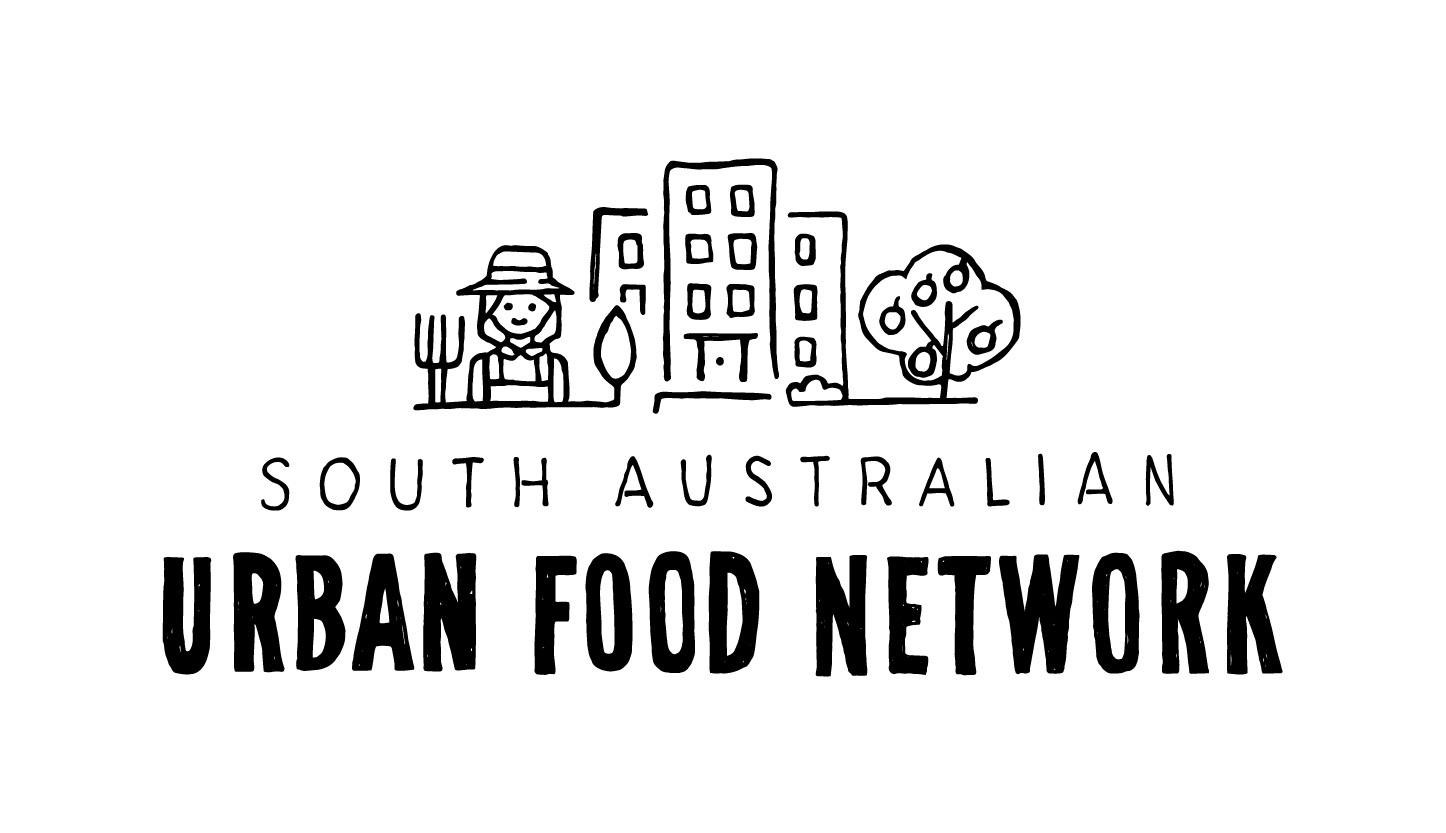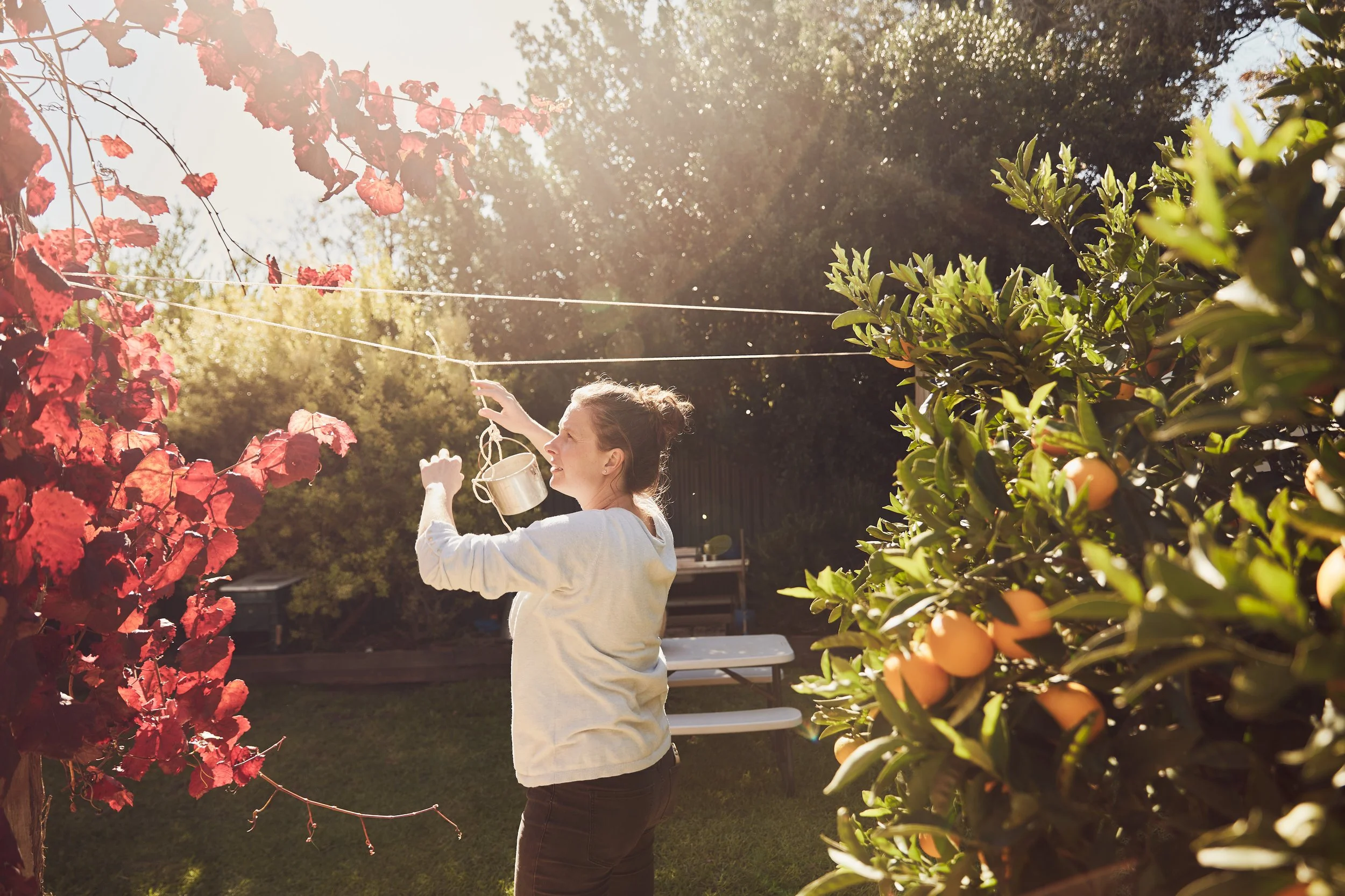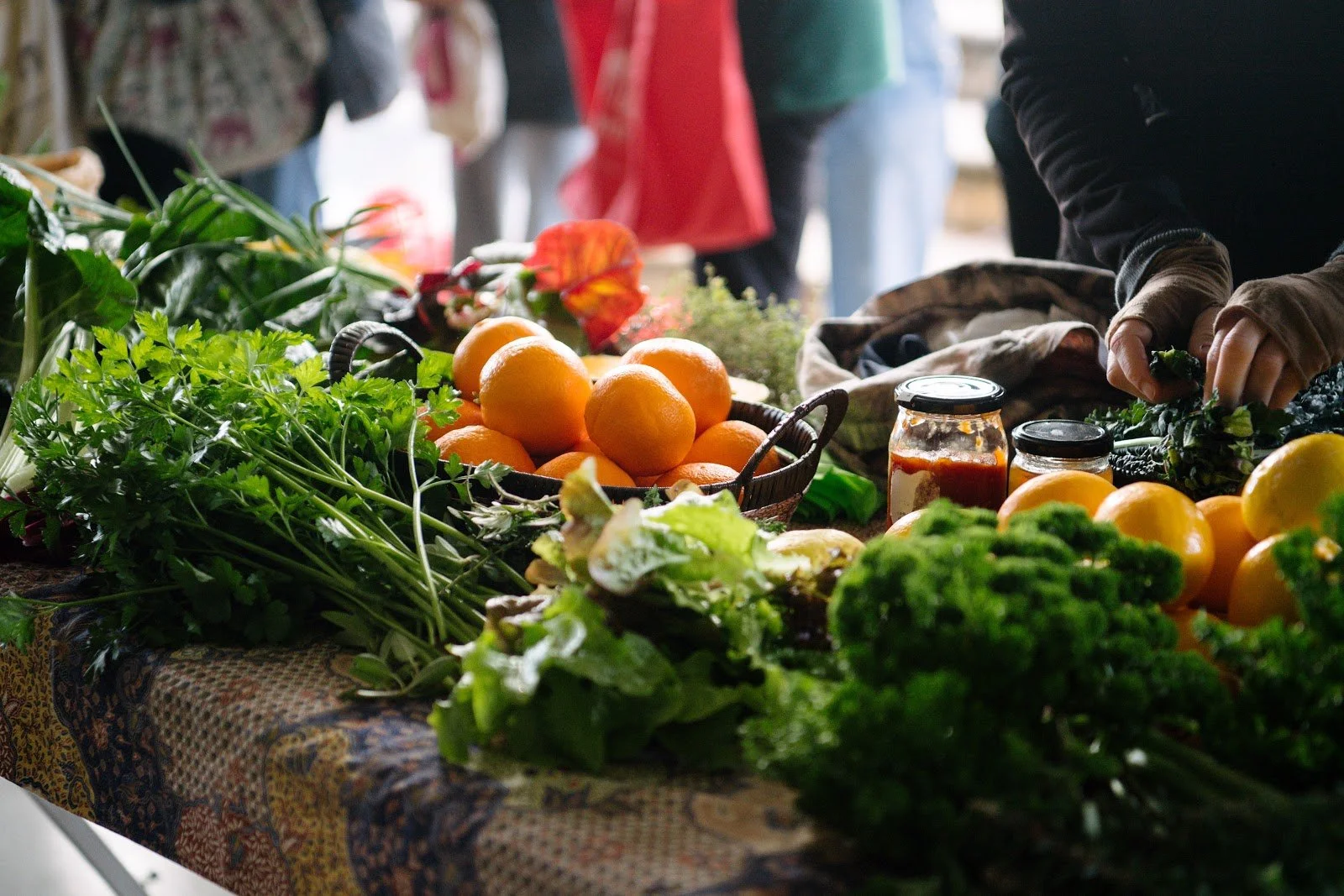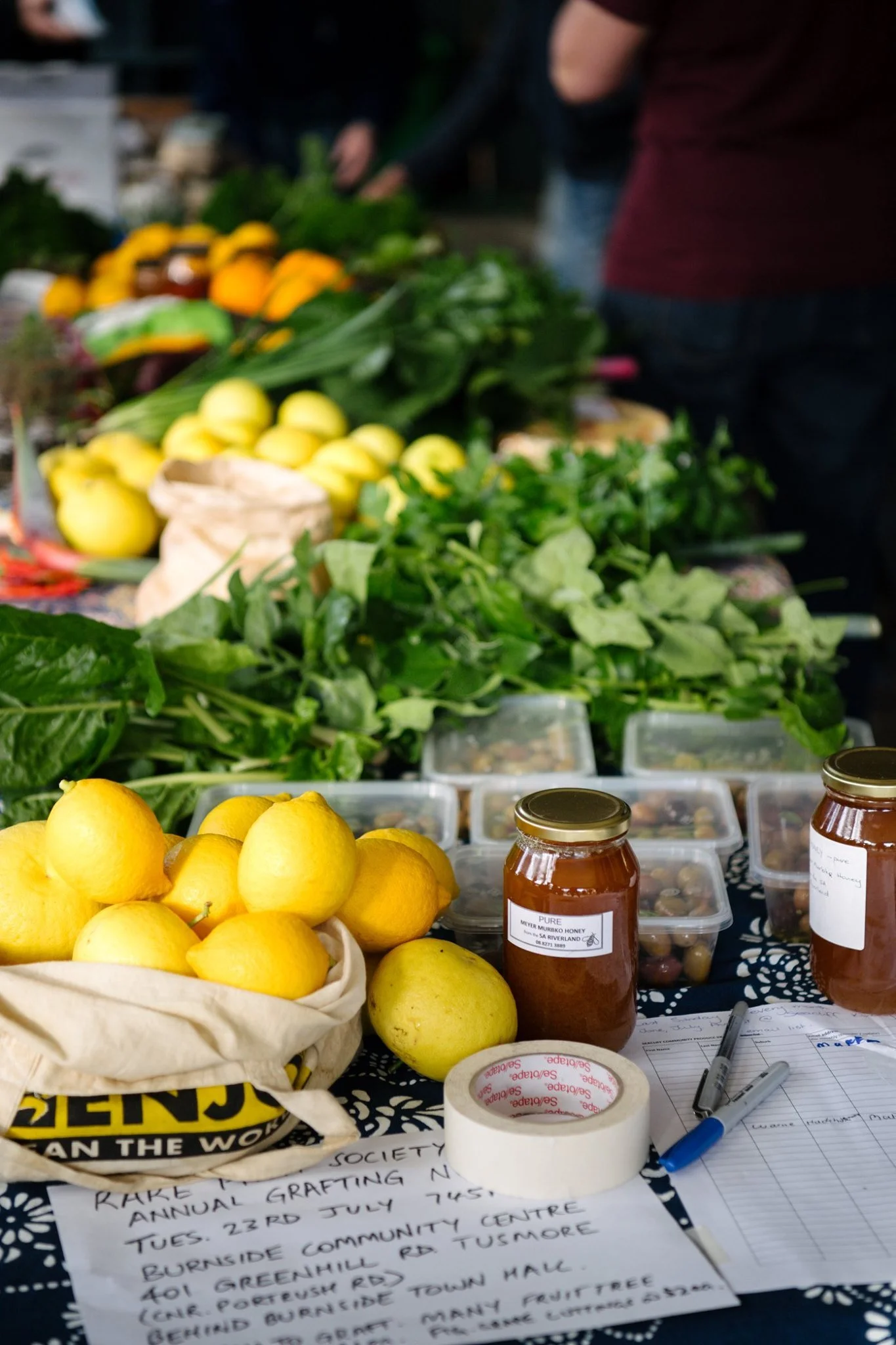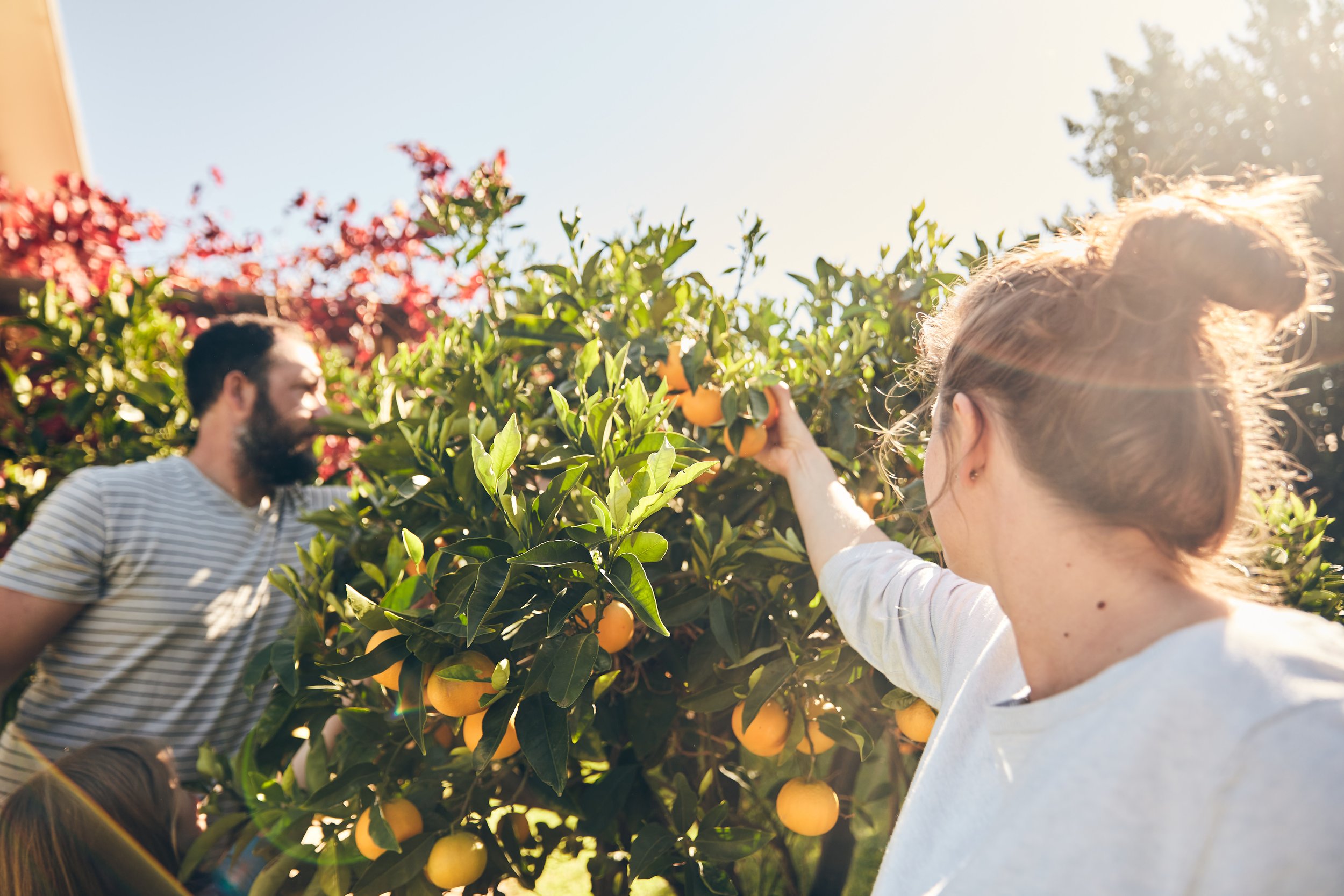Seacliff Community Produce Swap – on Adelaide’s southside
Beginning in 2018, the Seacliff Community Produce Swap has quickly become a popular way for local residents to connect and to share knowledge, seeds and produce. Here we talk to Emma Sandery, who brought the swap to life.
The key stats
Year established: 2018
Location: Seacliff (Kauri Reserve, corner of Kauri Parade and Wheatland Street.)
Open times: The group meets from September to May at 9.30am to 10.30am on the last Sunday of each month. In winter (June, July, August), the swaps move to Seacliff Community Kindergarten, 47 Kauri Parade, Seacliff.
Staff and volunteers: Emma runs the swap as a volunteer (with the help of her family) and everyone who has produce to share comes along.)
Capital: The group spent about $100 buying some second hand coffee plungers and thermos, tea and coffee supplies, an old table and printing some letterbox flyers. That’s about it!
Markets: The majority of people are local, but some people travel from further away to attend and share surplus homegrown foods. The majority come from within 5km, but the furthest was Milang with a wheelbarrow full of pumpkins!
What’s the project, in a nutshell?
Seacliff Community Produce Swap is a place to bring the local community together, share excess homegrown produce, take home some goodies, have a chat with neighbours and new friends over a cuppa, and share gardening knowledge, plus super-local seeds and seedlings.
“Our vision is a happy group of local people enjoying each other’s company and the pleasure of super fresh, super local produce,” Emma says.
The main idea is to come with any excess homegrown fruit, vegetables, herbs, flowers, nuts, seeds and seedlings or homemade jams, preserves and baked goods. All contributions are placed on the share table as people arrive and at 10am sharp everyone is welcome to take whatever they would like.
Emma says they get around thirty people each swap and it’s always dynamic, with mixture of new and regulars mingling together.
HOW DID THIS ALL GET STARTED?
Emma recalls she came across a guide on starting a produce swap and thought it was such a nice idea: combining local community, local produce, growing more of our own food and building stronger connections.
“I went along to the West Croydon Vege Swap to see what it was all about, and it was such a beautiful experience,” Emma says.
After considering the steps necessary to set up a similar venture, Emma hit a small setback when she wasn’t sure how to manage the insurance for the swap.
“Then I heard about Sustainable Communities SA,” she recalls.
By operating under Sustainable Communities SA, she could be covered by their insurance and wouldn’t need to worry about that side of things.
Emma also made networks and connections with the wider food swap community. She talked to the people behind the West Croydon Vege Swap and the Joslin Essential Edibles Produce Swap and learnt from how they have done things.
Emma says that her local council, City of Marion, were supportive of her initiative and provided her with a letter of support to provide for insurance – she was set.
Any tips for those wanting to start something similar?
Emma says it really didn’t take much to get the ball rolling.
She had already begun to build local networks via a Facebook group and used her local connections along with letterbox flyers to promote the initial swaps.
Getting your project featured in your local newspaper is a great way to promote it, Emma says. She also recommends forming connections with other local groups, such as community gardens or clubs.
Emma uses simple methods to keep members engaged – just a Facebook page and sending out monthly reminder emails keeps most people connected easily.
“We encourage people to be welcoming to newcomers and wear name tags to help conversation flow and make it easier to build relationships,” Emma says. Emma recommends checking out this article if you are wanting to start something similar.
What’s the biggest challenge so far?
Emma says her community has pulled together to see this initiative flourish, but more help would always be gratefully accepted.
“If we are to do more to spread the love of growing food in our local community, we will need more people to step up and volunteer to get involved, as I can’t take on much more myself,” Emma says.
Sometimes things might not go to plan, such as when they were looking for a more sheltered winter venue, but Emma says that the community has never let her down.
“When we’ve needed something, I’ve asked the produce swap group and it’s always worked out,” Emma says.
“This has been easier and more enjoyable than I thought it would be.”
What’s the best part?
Emma loves how quickly locals have jumped on board her initiative. “The local community has embraced the swap right from the start.”
The event has highlighted the huge variety and abundance of backyard garden produce. Emma would love to see backyard produce step into the spotlight and show people the abundance that is fostered in our urban environments.
She’s amazed how each month they step up more and more tables that continue to overflow with people’s produce and generosity.
“I love watching the kids looking at all the different food and tasting and trying things they might not have seen before.”
Watching all the conversations, budding friendships and exchanges happening within the group is also very special for Emma.
Tell us about the future - what’s next?
While the Seacliff Community Produce Swap is still young, Emma has high hopes for its future.
“We just had our second birthday party swap, which was beautiful – live music, flowers, cake and so much amazing fresh produce.”
Emma would love to see the produce swap continue forever and hopes the group can one day do even more to support local food in the community.
The group is full of passionate members that could help spread the joy of gardening and of fresh, local food.
Emma’s big dream? This group might one day be able to help others to get started, by acting as mentors or buddies.
Ways to get in touch
Website | www.sustainablecommunitiessa.org.au/projects/seacliff-community-produce-swap/
Newsletter | http://bit.ly/SPSMailingList
Facebook | @SeacliffProduceSwap
Photo credit: Morgan Sette
